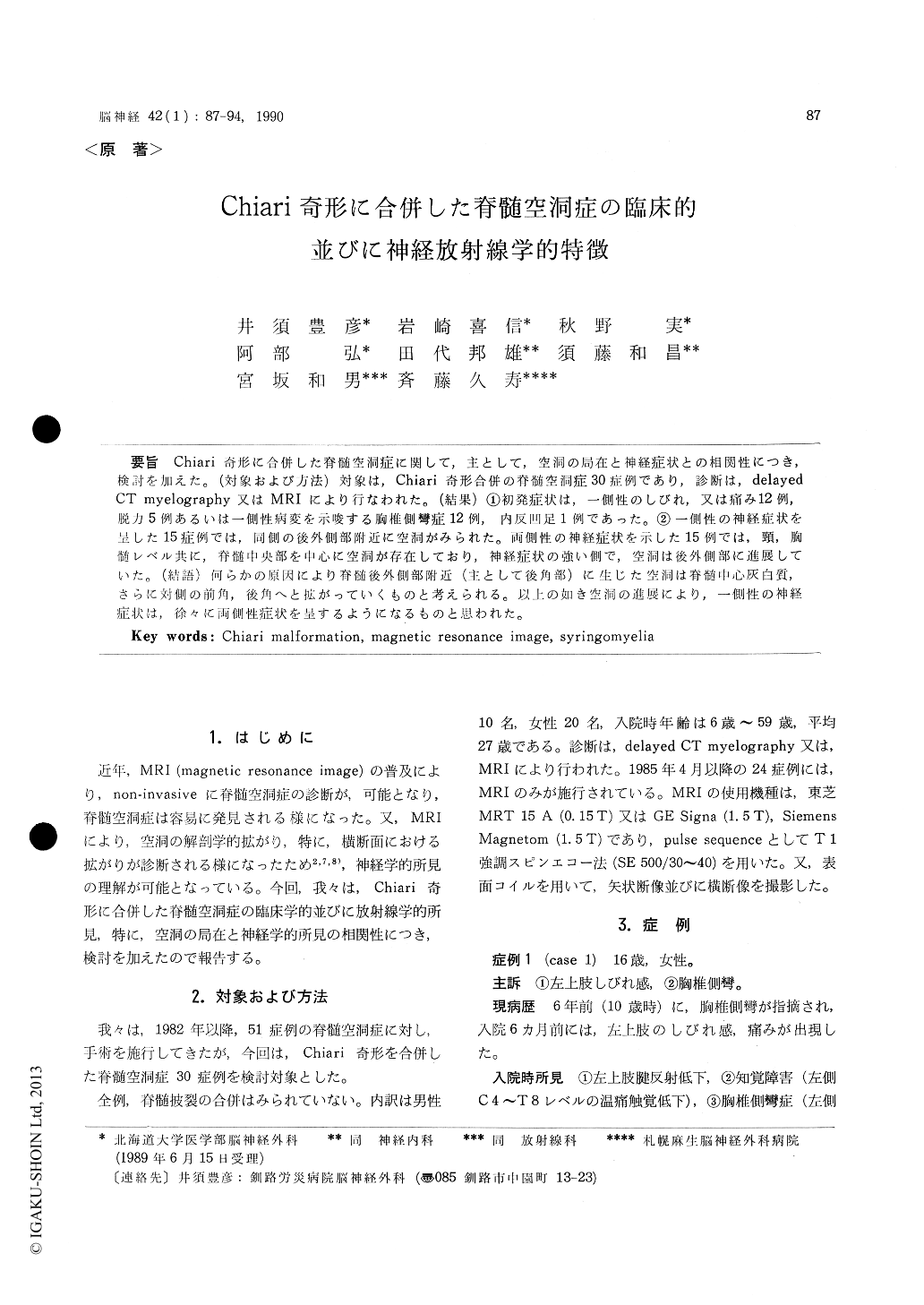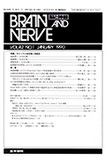Japanese
English
- 有料閲覧
- Abstract 文献概要
- 1ページ目 Look Inside
Chiari奇形に合併した脊髄空洞症に関して,主として,空洞の局在と神経症状との相関性につき,検討を加えた。(対象および方法)対象は,Chiari奇形合併の脊髄空洞症30症例であり,診断は,delayedCT myelography又はMRIにより行なわれた。(結果)①初発症状は,一側性のしびれ,又は痛み12例,脱力5例あるいは一側性病変を示唆する胸椎側遡症12例,内反凹足1例であった。②一側性の神経症状を呈した15症例では,同側の後外側部附近に空洞がみられた。両側性の神経症状を示した15例では,頸,胸髄レベル共に,脊髄中央部を中心に空洞が存在しており,神経症状の強い側で,空洞は後外側部に進展していた。(結語)何らかの原因により脊髄後外側部附近(主として後角部)に生じた空洞は脊髄中心灰白質,さらに対側の前角,後角へと拡がっていくものと考えられる。以上の如き空洞の進展により,一側性の神経症状は,徐々に両側性症状を呈するようになるものと思われた。
The clinical presentation and radilological fea-tures were analyzed in 30 cases of syringomyelia associated with Chiari malformation. None of the patients had spinal dysraphism. The age on admission ranged from 6 to 59 years with a mean of 27 years. Syringomyelia was diagnosed by CT myelography and or MRI from 1982 to 1988. The initial symptoms were skeletal abno-mality (43%) such as scolisis (12 cases) or pes cavus (one case), unilateral pain or numbness (40%) and unilateral motor weakness (17%). Frequently seen signs on admission were sensory deficit (100%), scoliosis (57%), muscle weakness (57%), muscle atrophy (37%) and lower cranialnerve palsy (40%). The neurological findings were asymmetrical in all patients. The characteristic neurological findings in the cases presenting under 20 years of age were unilateral sensory and motor deficits (61%) with decreased or absent deep tendon reflex on the same side. The locali-zation of the syrinx in axial section varied accord-ing to the level even in the same case. In 15 cases with unilateral sensory disturbance or uni-lateral sensory and motor deficit, the syrinx was located in the region corresponding to the pos-terolateral portion on the same side as that of sensory disturbance in the cervical or thoraciclevel. On the other hand, in 15 cases with bila-teral sensory and motor deficit, the syrinx was located in the central portion and extended into the posterolateral portion of the more affected side. The authors think that the syrinx which originates from the unilateral posterolateral por-tion, extends to involve the gray matter around the central canal and the posterolateral portion of the other side with progression of the syrinx to cause bilateral disturbance. As a result, unila-teral neurological symptoms also become bilateral with progression of the syrinx.

Copyright © 1990, Igaku-Shoin Ltd. All rights reserved.


